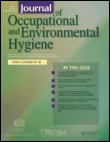
JOURNAL OF OCCUPATIONAL AND ENVIRONMENTAL HYGIENE
Scope & Guideline
Enhancing Public Health Through Rigorous Research
Introduction
Aims and Scopes
- Occupational Health and Safety Assessment:
Research dedicated to evaluating and improving occupational health and safety standards, including assessments of exposure to hazardous substances and the effectiveness of protective equipment. - Environmental Impact Studies:
Investigations into how workplace environments, including exposure to chemicals and biological agents, affect health outcomes, particularly in industries such as construction, manufacturing, and agriculture. - Innovative Exposure Mitigation Strategies:
Development and evaluation of new methodologies and technologies aimed at reducing exposure to harmful agents, including the use of personal protective equipment (PPE) and engineering controls. - Epidemiological Studies:
Analysis of health outcomes related to occupational exposures, including studies on noise-induced hearing loss, respiratory diseases, and the impacts of psychosocial factors in the workplace. - Public Health Interventions:
Exploration of interventions aimed at improving worker health, including training programs, policy recommendations, and community health initiatives.
Trending and Emerging
- COVID-19 Related Research:
A significant surge in studies addressing the impacts of COVID-19 on workplace safety, including aerosol transmission, PPE effectiveness, and mental health implications for workers during the pandemic. - Nanoparticle Exposure and Risk Assessment:
Growing attention towards the health risks associated with nanoparticles and engineered nanomaterials, reflecting the rise of nanotechnology in various industries and the need for comprehensive exposure assessments. - Mental Health and Occupational Stress:
Increasing research into the mental health impacts of occupational stress, particularly in the context of the COVID-19 pandemic and its aftermath, highlighting the importance of psychological well-being in the workplace. - Advanced Monitoring Technologies:
Emerging research on the use of innovative monitoring technologies, such as wearable devices and sensor systems, to assess exposure levels and improve occupational safety practices. - Sustainable Practices and Environmental Health:
An upward trend in studies focusing on sustainable practices in occupational settings, including the assessment of environmental impacts and the promotion of green chemistry in the workplace.
Declining or Waning
- Traditional Chemical Exposure Studies:
Research focusing solely on chemical exposures without considering the broader context of environmental factors and multi-exposure scenarios has become less frequent, indicating a shift towards more integrated approaches. - General Workplace Safety Practices:
Studies that address generic workplace safety practices without specific focus on emerging hazards or innovative technologies are diminishing, reflecting a growing need for targeted and evidence-based approaches. - Aging Workforce Concerns:
While still important, there has been a noticeable reduction in studies specifically addressing the aging workforce and its unique health challenges, as the focus has shifted to more pressing contemporary issues like mental health and COVID-19 impacts.
Similar Journals

Journal of Agromedicine
Advancing health at the crossroads of agriculture and medicine.Journal of Agromedicine, published by TAYLOR & FRANCIS INC, stands as a reputable and critical resource in the field of Public Health and Environmental and Occupational Health. With an ISSN of 1059-924X and an E-ISSN of 1545-0813, this journal addresses the intersection of agriculture and medicine, providing a platform for researchers and practitioners to publish innovative studies related to health risks associated with agricultural practices, occupational exposure, and environmental impacts. Since its inception in 1994, the journal has earned a significant place in the academic community, reflected in its Q2 category ranking for 2023 and a notable Scopus rank of #237 out of 665 in its field, illustrating its recognition among peers with a commendable 64th percentile standing. Although it operates under a traditional access model, the Journal of Agromedicine continues to strive towards its objectives of disseminating impactful research, fostering collaboration, and enhancing the understanding of health issues relevant to the agricultural sector. Located in Philadelphia, PA, the journal remains dedicated to advancing knowledge that contributes to safer agricultural practices and improved public health outcomes, making it a vital source of information for researchers, professionals, and students alike.

Occupational Health Science
Exploring the science of health in the workplace.Occupational Health Science, published by SPRINGER NATURE, presents a vital platform for advancing research in the field of occupational health and safety. With an ISSN of 2367-0134 and E-ISSN 2367-0142, this journal addresses critical issues related to worker health, the impact of occupational exposure to physical and psychosocial hazards, and promotes the development of effective workplace interventions. As a valuable resource for researchers, professionals, and students alike, it aims to foster a deeper understanding of the factors affecting occupational health and the efficacy of preventive measures, contributing significantly to the well-being of workers globally. While the journal currently operates under a traditional access model, its rigorous peer-review process and commitment to high-quality research ensure its prominent position in the academic community. Engage with Occupational Health Science to stay at the forefront of this essential discipline and enhance your knowledge and practices in creating safer workplaces.
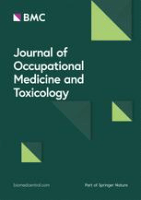
Journal of Occupational Medicine and Toxicology
Empowering research for a healthier workforce.The Journal of Occupational Medicine and Toxicology, published by BMC, is a pivotal open access journal that has been at the forefront of advancing knowledge in the fields of workplace health, environmental safety, and toxicology since its inception in 2006. With a robust impact factor and a distinguished reputation, this journal occupies a significant position in academic rankings, including Q2 in Public Health and Occupational Health, and Q1 in both Safety Research and Toxicology for 2023. Renowned for its rigorous peer-review process, it serves as a vital resource for researchers, professionals, and students aiming to disseminate and access high-quality research and innovative practices in occupational health and toxicological studies. Based in the United Kingdom, the journal prioritizes global access to research, ensuring that critical information reaches a diverse audience, conducive to the advancement of public health and safety. As it converges towards 2024, the journal continues to lead discussions that shape policies and practices related to workforce environments, chemical exposure, and preventative strategies in health management.
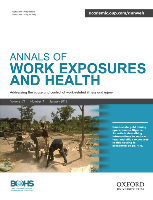
Annals of Work Exposures and Health
Illuminating the path to safer workplaces.Annals of Work Exposures and Health, published by Oxford University Press, stands as a leading journal dedicated to the field of public health with a particular focus on environmental and occupational health issues. Since its inception in 2016, the journal has provided a robust platform for disseminating high-quality research, boasting an impressive impact factor that reflects its rigorous peer-review process and significant contribution to advancing knowledge in the field. With its open access model, the journal ensures that critical findings are readily available to researchers, professionals, and students, fostering a collaborative spirit in tackling the challenges associated with work-related health exposures. As of 2023, it ranks in Q2 in its category, positioned within the 69th percentile in Scopus, illustrating its influence and relevance in the ongoing discourse surrounding occupational health. The Annals continues to attract diverse contributions that aim to inform policy and practice, making it an essential resource for anyone involved in public health research and advocacy.

Indian Journal of Occupational and Environmental Medicine
Innovating Practices for Occupational Safety and Environmental Well-beingIndian Journal of Occupational and Environmental Medicine, published by Wolters Kluwer Medknow Publications, is a pivotal resource in the field of public health, focusing on the critical intersections of occupational safety and environmental health. With the ISSN 0973-2284 and E-ISSN 1998-3670, this journal has been a beacon of knowledge since its inception in 1999 and continues to influence scholarly discourse through its convergence years culminating in 2024. Recognized for its contribution to the field with a 2023 Scopus categorization of Q3 in Public Health, Environmental and Occupational Health, it has secured its place among the top journals, ranked #453 out of 665 within its specialty, reflecting a respectable 31st percentile. While it operates on a subscription basis, the journal ensures comprehensive coverage of significant research, thereby enhancing occupational health practices and environmental health policies. It serves as a vital platform for researchers, professionals, and students dedicated to advancing knowledge and improving outcomes in these crucial areas of health. The journal's commitment to excellence is evident as it continues to cater to a diverse readership from its base in Mumbai, India.

SCANDINAVIAN JOURNAL OF WORK ENVIRONMENT & HEALTH
Empowering public health in the workplace.SCANDINAVIAN JOURNAL OF WORK ENVIRONMENT & HEALTH, published by the Scandinavian Journal Work Environment & Health, is a leading platform dedicated to advancing research in the fields of public health, environmental health, and occupational health. Established in 1975 and set to continuously evolve until 2024, this journal serves as a vital resource for scholars, practitioners, and policymakers concerned with workplace health and safety issues. Notably, it holds an impressive Q1 ranking in its category, and is positioned in the top 10% (90th percentile) of its field according to Scopus rankings, affirming its significance and impact within contemporary research. With a commitment to rigorous peer-review, the journal provides open access to cutting-edge studies, promoting knowledge dissemination and collaborative dialogue among professionals. As the landscape of work environments increasingly intersects with health outcomes, the SCANDINAVIAN JOURNAL OF WORK ENVIRONMENT & HEALTH remains an essential reference point for all those aiming to enhance workplace health criteria and public well-being.

AMERICAN JOURNAL OF INFECTION CONTROL
Empowering health professionals to combat infectious diseases.The American Journal of Infection Control is a leading peer-reviewed publication dedicated to advancing the field of infection prevention and control. Published by Mosby-Elsevier, this journal has been a crucial resource since its inception in 1980, focusing on the intersection of infectious diseases, public health, and health policy. As of 2023, it holds an impressive Q1 ranking in both Health Policy and Public Health, Environmental and Occupational Health, while also achieving Q2 rankings in Epidemiology and Infectious Diseases. With an increasing impact factor and a strong reputation reflected in its Scopus rankings, the journal appeals to researchers, health professionals, and students committed to preventing the spread of infections and enhancing healthcare safety. Although it does not currently offer Open Access, the journal ensures broad dissemination of its vital research through various subscription options. By fostering interdisciplinary collaboration and evidence-based practices, the American Journal of Infection Control plays a pivotal role in shaping effective infection control policies and practices worldwide.

Journal of Agricultural Safety and Health
Transforming agricultural safety through research and knowledge.Journal of Agricultural Safety and Health is a premier publication dedicated to advancing the knowledge and practice of safety and health in agricultural environments. Published by the American Society of Agricultural and Biological Engineers, this journal has been a vital resource since its inception in 1997, providing a platform for research that addresses critical issues related to occupational safety, risk management, and public health in the agricultural sector. With an ISSN of 1074-7583 and an E-ISSN of 1943-7846, the journal is indexed in various databases and achieves recognition in the academic community, notably being categorized in Q3 for Agricultural and Biological Sciences and Safety, Risk, Reliability and Quality, and Q4 for Public Health and Environmental Health in the latest rankings. Researchers, practitioners, and students can access valuable insights and findings that not only reflect the current state of agricultural safety but also guide future improvements in health standards and practices. As the field continues to evolve, the Journal of Agricultural Safety and Health remains committed to its mission of promoting safety and health in agricultural work, ensuring that the community thrives in a safe and productive environment.
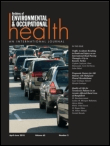
Archives of Environmental & Occupational Health
Pioneering research at the intersection of health and environment.Archives of Environmental & Occupational Health is a prestigious journal published by Routledge Journals, Taylor & Francis Ltd, dedicated to advancing research and knowledge in the realms of environmental science, occupational health, and toxicology. With an ISSN of 1933-8244 and an E-ISSN of 2154-4700, this peer-reviewed journal has gained significant recognition, currently holding a Q2 ranking in Environmental Science and Q3 rankings in Health, Toxicology and Mutagenesis, and Public Health. Established in 2005, it serves as a vital platform for researchers, practitioners, and policymakers alike who aim to address and disseminate findings on pressing environmental and occupational health issues. The journal is not open access, allowing for rigorous peer review processes while still reaching a broad readership. As it converges through 2024, the Archives of Environmental & Occupational Health continues to play a critical role in shaping discourse and fostering innovation in the field, making it an essential resource for those committed to improving both human health and the environment.
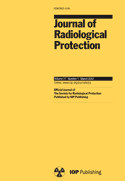
JOURNAL OF RADIOLOGICAL PROTECTION
Empowering professionals through cutting-edge research.Journal of Radiological Protection, published by IOP Publishing Ltd, is a pivotal academic journal dedicated to advancing knowledge in the fields of radiology and radiation protection. Since its inception in 1988 and continuing through to 2024, this journal provides a platform for the dissemination of innovative research and critical reviews that explore the effects of radiation exposure on health and the environment. With an Impact Factor that places it among the Q3 category in Medicine, Public Health, Environmental and Occupational Health, as well as in Waste Management and Disposal, the journal is vital for professionals, researchers, and students keen on understanding the implications of radiological science. The Journal of Radiological Protection aims to contribute to improved practices and policies in radiation safety, making its findings essential for those involved in environmental health and public safety initiatives. Articles are accessible through various academic databases, ensuring widespread dissemination among the scientific community, thereby enhancing the journal's stature and influence in radiological research.